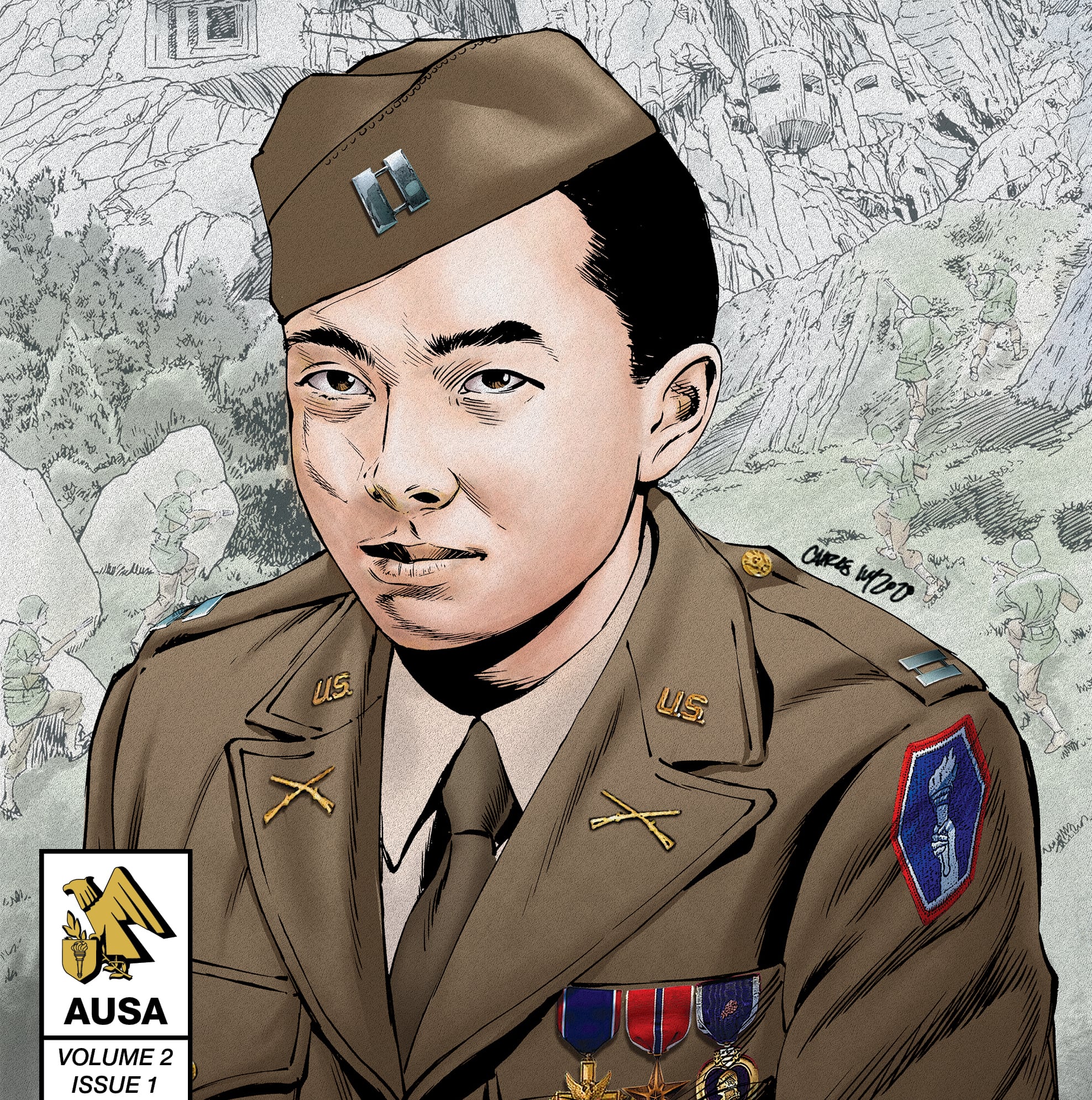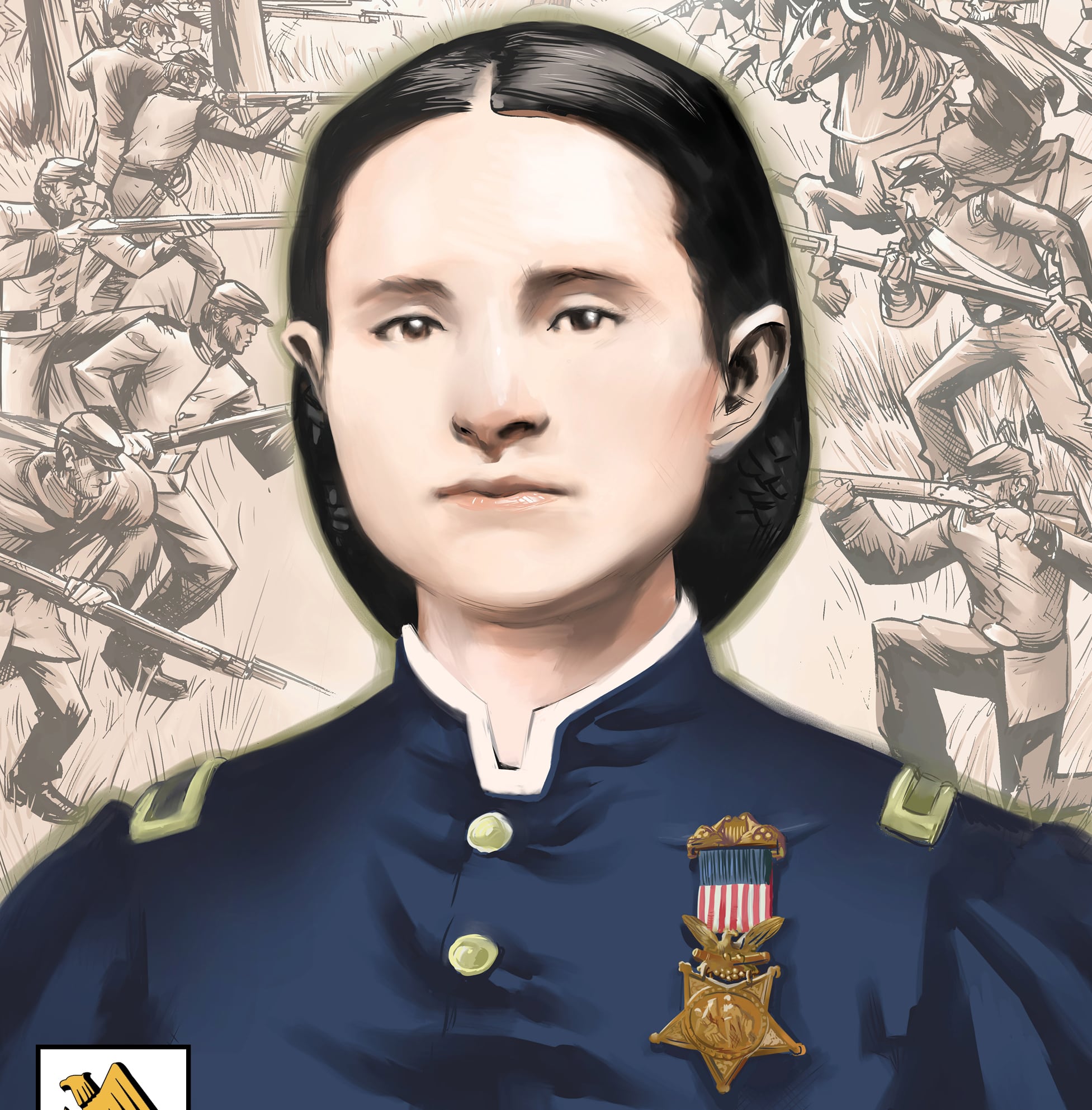The seventh installment in an illustrated series dedicated to soldiers whose actions earned them the nation’s highest award for military valor is now available online.
The newest issue of “Medal of Honor,” a graphic series produced by the Association of the U.S. Army, spotlights the Civil War heroics of Mary Walker, the first woman in the U.S. to earn a medical degree and the only woman to ever receive the Medal of Honor.
Born in Oswego, New York, to abolitionist parents, Walker attended Syracuse Medical College prior to the outbreak of the Civil War, when she saw an opportunity to serve as a surgeon in the U.S. Army.
But the arrangement wasn’t a seamless one. In 1861, Walker attempted to join the ranks of U.S. Army surgeons but was denied for being a woman. Like many obstacles she encountered prior to 1861, Walker refused to allow the hiccup to derail her.
Years as an unpaid surgeon’s assistant finally paid off when, at the height of the war, Walker was issued a contract as a credentialed War Department surgeon at the recommendation of Maj. Gen. William T. Sherman and Maj. Gen. George H. Thomas.
RELATED

In service to the Union, Walker became well known among troops on both sides as one who would routinely risk crossing enemy lines to tend to wounded or sick civilians. Walker was captured by Confederate troops in 1864 during one such daring venture, and was subsequently sent to the infamous Castle Thunder Prison Camp in Richmond, Virginia.
“The prison was mainly used for civilian prisoners and was generally packed with murderers, cut-throats, thieves and other desperadoes,” the Civil War Richmond page states. “Males suspected of disloyalty, spies and Union sympathizers were also incarcerated there and a large number of the inmates were under sentence of death.”
For four months Walker cared for wounded men from behind the walls of the prison, where she would be credited with providing life-saving measures to numerous inmates until her eventual release as part of a prisoner exchange.

Assignments to a women’s prison hospital, and then an orphanage, followed, as did a new fight as a staunch advocate for women’s rights, including the women’s suffrage movement.
Seven months after the bloody conflict concluded with Gen. Robert E. Lee’s surrender to Ulysses S. Grant at Appomattox, Walker, at the recommendation of numerous high ranking officers, was presented the Medal of Honor by President Andrew Johnson.
To this day, Walker remains the only woman to receive the medal, an honor made even more unique in that she earned the recognition while working as a civilian. That distinction spurred controversy, however, and in 1917, as part of a grand review of all issued Medals of Honor, the War Department determined that her civilian status made her an invalid recipient.
Walker, along with more than 900 others who were also deemed ineligible, was told that wearing an unearned medal would be considered a crime.
But as she did her entire life, Walker refused to allow the modified, male-imposed rules define her service, and continued to wear the medal up until her death in 1919 at the age of 86.
It wouldn’t be until 1977 that petitions by her family to have the honor reinstated were finally granted when President Jimmy Carter restored Walker’s place among Medal of Honor recipients. Today, Walker’s medal rests in a display case at the Pentagon.
Walker’s heroics and trailblazing efforts made her a clear-cut selection for the AUSA team’s third graphic novel installment of 2020.
“One of the things I was really impressed with is the level of work that the creative team has put into it,” said Joseph Craig, director of AUSA’s book program.
“The scripts and the artists — these are all people from the world of professional comic book publishing. These guys know comics, they know military comics in particular, and the job is just really top notch.”
The collaborative team included script-writing by Chuck Dixon (“Batman,” “The Punisher”), drawings by Karl Moline (“Supergirl,” “Buffy the Vampire Slayer”), color work by Peter Pantazis (“Justice League,” “Superman,” “Wolverine”), and lettering by Troy Peteri (“Spiderman,” “Iron Man,” “X-Men”).
A final edition of the 2020 series, meanwhile, will feature Holocaust survivor and Korean War veteran Cpl. Tibor Rubin. Past issues have highlighted the actions of figures such as Alvin York, Henry Johnson, Roy Benavidez, Daniel Inouye, Audie Murphy and Sal Giunta.
Read the full issue of Medal of Honor: Mary Walker here.
J.D. Simkins is the executive editor of Military Times and Defense News, and a Marine Corps veteran of the Iraq War.
Tags:
military graphic novelsmilitary comicsbest graphic novelsausa medal of honormedal of honor graphic novelmedal of honor comicmary walker medal of honormary walker civil warIn Other News














